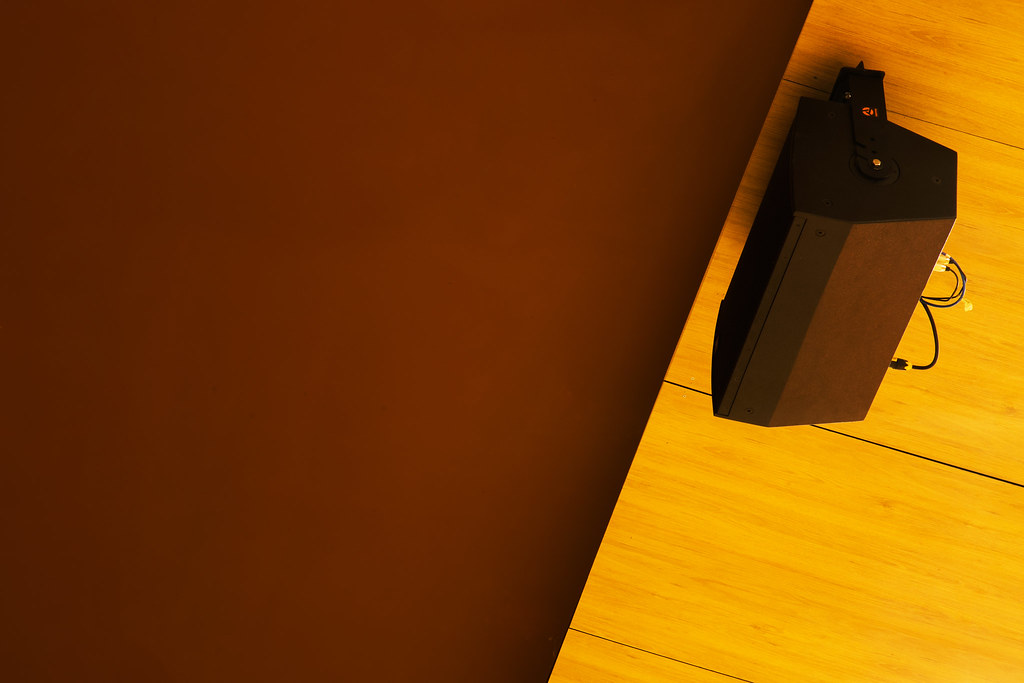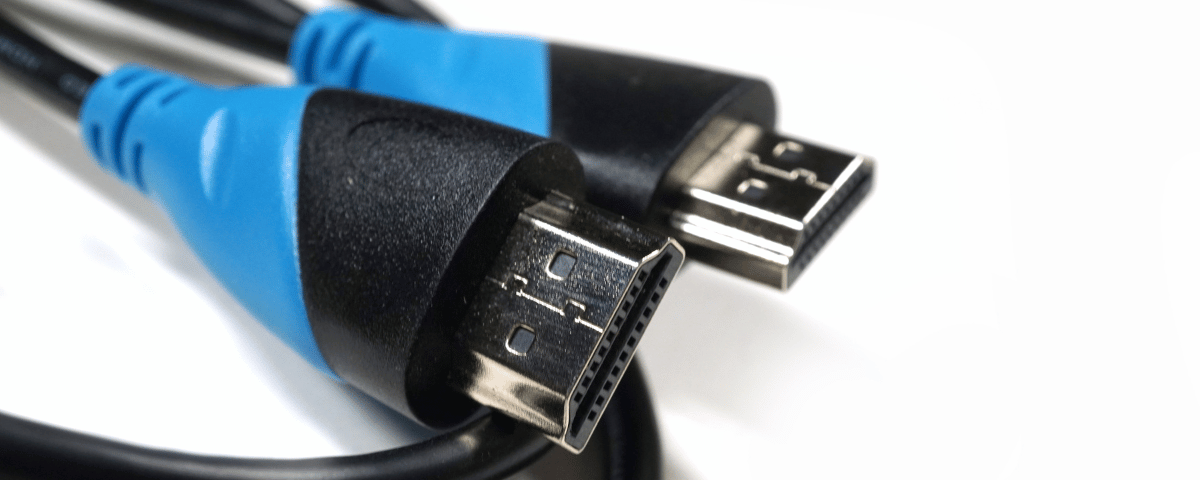Table of contents
At Schaller Design Lab, we understand that speaker cables are the unsung heroes of any audio setup. They’re the lifelines that deliver the sound from your amplifier to your speakers, and the quality of these cables can make or break your listening experience.
We’re here to dive into the nuances of speaker cables, exploring how different materials, constructions, and designs can influence the clarity, warmth, and overall quality of the sound. Stick with us as we unravel the mysteries behind these essential components and help you make an informed decision for your audio system.
What are Speaker Cables?
Definition of Speaker Cables
Speaker cables are more than just wires connecting audio components; they’re the critical conduits through which electrical signals flow to create sound. At Design Lab, we understand that these cables play a pivotal role in the performance of your audio system. Specifically, they consist of two or more electrical conductors insulated by a protective covering, designed to carry the audio signal from a power amplifier to a speaker. The core materials typically include copper or silver, known for their conductive properties.
Importance of Speaker Cables
We at Design Lab emphasize that quality speaker cables are not just an accessory but an integral part of any audio setup. The right cables are essential for preserving the integrity of the audio signal. Inferior cables can degrade the sound by introducing resistance, capacitance, and inductance, which can affect the timing and clarity of the music. By using high-quality speaker cables, the audio system is equipped to deliver the sound exactly as intended, ensuring that every nuance and detail comes through with utmost clarity and warmth.
Can I Use an Electrical Cable for My Speakers?
It’s a common question, but speaker cables and standard electrical cables are not the same. Electrical cables are designed to carry larger amounts of electrical current and are not optimized for the nuances of the audio signal. While you might be tempted to use electrical cables as a cost-effective solution, you’ll be missing out on the benefits that proper speaker cables provide. Quality speaker cables from Design Lab are engineered with audio performance in mind, thus ensuring a better sound experience.
By choosing speaker cables wisely, we ensure the lifelines of our audio system are capable of delivering the high-quality sound we all enjoy.
Types of Speaker Cables

Experience the power of sound with a close-up view of a professional speaker, ready to deliver high-quality audio.
As we dive deeper into the world of speaker cables, we’ll come across various types, each with its own set of benefits and applications. Knowing which type of speaker cable to choose for your audio setup can have a significant impact on sound quality. Let’s look at some of the most common types you might consider for your system.
Oxygen-Free Speaker Cable
Oxygen-free speaker cables are designed to reduce corrosion and enhance conductivity. They’re manufactured with a lower level of oxygen to prevent the copper inside the cables from oxidizing over time. What makes them a preferred choice for audiophiles and professionals is their ability to maintain the purity of the sound signal, ensuring a clearer audio experience. Our business, Design Lab, often recommends oxygen-free cables for their longevity and performance.
Single Conductor Cables
Single conductor cables are a no-frills option that serves the basic purpose of connecting speakers to an amplifier. They consist of a single strand or a group of smaller strands making up a larger conductor. They are typically less expensive and easier to handle but may not provide the superior sound quality that more complex cable designs offer. Single conductor cables are a solid choice for beginners or for those who have less demanding sound system requirements.
Bi-Wire Cables
Bi-wire cables are designed for speakers with separate inputs for high and low frequencies. By splitting the signal path, they can reduce the interference between different frequency ranges. This separation results in improved soundstage and tonal clarity. We often suggest using bi-wire cables if your speakers and amplifier support this configuration—it can truly make a difference in the fine details of what you hear.
Bi-Amp Cables
Bi-amp cables take the concept of bi-wiring further by using separate amplifiers for the high and low-frequency speaker inputs. The separation of frequency ranges is maximized in this setup, potentially offering an even greater enhancement of audio detail and clarity. For those who want the ultimate performance from their audio system, bi-amping with quality cables is an advanced option that pushes the capabilities of your gear.
Factors to Consider When Choosing Speaker Cables
Gauge
When we think about speaker cables, one of the first aspects we delve into is the gauge or thickness of the cable. Typically, a lower gauge number denotes a thicker cable, which can carry the signal more efficiently over longer distances. This becomes crucial in preventing loss of signal quality or power, especially in setups where cables must run a considerable length.
In most home applications, a 16-gauge cable suffices, but for longer runs or more demanding installations, a thicker 12 or 14-gauge cable may be necessary. It’s also vital to consider the impedance of your speakers; lower impedance speakers generally call for a lower gauge cable to ensure optimal performance.
Length
Another vital factor in selecting the right speaker wire is length. It’s a simple rule: the shorter, the better. Longer cables can lead to a reduction in sound quality, introduced by resistance. This doesn’t mean we can’t use long cables when necessary, but we should always opt for the shortest possible length that fits our needs.
Also, it’s essential to avoid coiling excess cable as this can cause interference. If our Design Lab setup requires a longer cable, it’s better to choose one with a lower gauge to counter the potential signal degradation.
Material
Lastly, let’s talk about the material of the speaker wire. Common materials include copper, silver, and gold, each with its own set of characteristics. Copper is widely used due to its excellent conductivity and relatively low cost. On the other hand, silver conducts even better than copper but tends to be more expensive. Gold doesn’t corrode, making it a good choice for connectors but it’s the least conductive of the three.
While the material does play a role, the differences in sound quality among these materials are often subtle. Our focus at Design Lab is to ensure that whatever material you choose, you’re informed about the trade-offs and benefits it brings to your audio experience.
Common Myths About Speaker Cables
Does the Price Matter?
In our hunt for the perfect audio setup, we often stumble upon the belief that higher priced speaker cables automatically mean better performance. However, at Design Lab, we’ve done our research and can confidently bust this myth.
Costly materials and intricate designs may jazz up the appeal and perhaps the durability, but they don’t necessarily translate to significant differences in audio quality. In fact, mid-range cables can often serve us just as well if they meet the appropriate specifications for our setup.
Do Expensive Cables Provide Better Sound Quality?
It’s a widespread assumption that shelling out more cash for speaker cables will give us top-tier sound quality. But let’s set the record straight: it’s not always the case. The truth is, the quality of sound depends more on the cable’s gauge, material, and overall construction rather than its price tag.
While some high-end cables have features like improved shielding that may reduce interference, for the average consumer, these enhancements might not result in a noticeable improvement in sound. We suggest focusing on functionality and compatibility over luxury branding.
Does Oxidation Affect Sound Quality?
Worried about oxidation? Let’s get to the bottom of it. When our speaker cables are exposed to air, oxidation is inevitable. But does it really affect the sound quality? The short answer: it can, but not always to a degree that’s detectable by most of us.
Some audiophiles might claim that they hear a decline in performance, but for the vast majority, the impact of oxidation on sound is negligible. To minimize this effect, we can opt for cables with good quality insulation and perhaps even consider gold-plated connectors, known for their resistance to corrosion.
How to Properly Connect Speaker Cables
Terminating the Cables
When we’re setting up our sound systems, we must give attention to terminating the cables. Proper termination means ensuring that the cable ends are prepared to make a secure and solid connection with the speaker terminals. Bare wire connections, while common, aren’t always the best option. Instead, we recommend using banana plugs or spade connectors for a more reliable connection. These ensure not only that the connection is stronger but also facilitate easier disconnection and reconnection when necessary.
Banana plugs and spade connectors also help to prevent strands of wire from short-circuiting the system by touching adjacent terminals. It’s vital to be aware of the polarity of the cables; the positive and negative terminals must match on both the amplifier and the speakers. Incorrect wiring can lead to a phase issue, which negatively impacts sound quality.
Correct Placement of Cables
As for the correct placement of speaker cables, we trust that neatness matters both aesthetically and functionally. We advise running cables along baseboards or using cable management systems to keep them out of sight and out of the way. This reduces the risk of tripping or pulling, which might not only damage the cable but also disrupt the system’s sound performance.
Furthermore, keeping cables apart from power cords and other sources of interference is a pro tip from us at Design Lab. This separation minimizes electronic noise that could compromise audio clarity. Also, ensure that the cables are not being tightly bent; sharp bends can damage the internal wiring. Lastly, if the cables cross paths with other cables, it’s best to have them cross at an angle, rather than running parallel, to prevent electromagnetic interference.
By addressing these key aspects, we ensure that our speaker cables are connected correctly, offering the best possible sound experience with minimal signal loss or interference.
Maintenance and Care for Speaker Cables

Experience the power of sound with a close-up view of a black box with a switch and cables, ready to deliver high-quality audio.
We all know that ensuring longevity and optimum performance of our speaker cables requires regular maintenance and care. With the right approach, we can significantly extend the life of our speaker cables, keeping our sound quality clear and uninterrupted for years to come. Let’s dive into the essentials of keeping them in top shape.
Cleaning the Cables
When it comes to maintenance, regular cleaning is key. Dust and grime can accumulate on our speaker cables over time, which can not only affect their performance but also contribute to the overall deterioration of the cable’s material. To tackle this, we’ll need to gently wipe the cables with a dry cloth. If there’s stubborn residue, we might occasionally use a lightly dampened cloth with a mild detergent, ensuring the cables are completely dry afterward.
We must be careful to avoid abrasive materials or harsh chemicals, as these can damage the insulation and affect the cable’s signal conductivity. It’s also crucial to disconnect the cables from the audio system before we start cleaning to avoid any potential damage to our equipment.
Protecting Cables from Damage
Beyond cleanliness, safeguarding our speaker cables from damage is paramount. Properly routing and storing our cables will prevent them from being stepped on, crushed, or stretched. Here’s how we protect our investment:
- We route cables away from foot traffic to avoid accidental damage.
- Avoid kinks and coils that can stress the cable and degrade the signal.
- Use proper cable organizers to keep them tidy and secure, avoiding a tangled mess.
- It’s wise to consider the usage of cable conduits or covers for added protection in high-traffic areas.
Moreover, we watch out for the proximity of our cables to electrical appliances and heat sources as these can cause interference or melt the insulation. UV rays can also lead to the deterioration of cable materials, therefore running cables in direct sunlight for extended periods is something we avoid.
Protecting cables from rodents should also be part of our routine, particularly for those of us with pesky critters that have a penchant for gnawing through wires. Investing in rodent-resistant braiding can save us from unexpected signal loss or short-circuits.
And finally, when not in use, we ensure that speaker cables are coiled correctly and stored in a cool, dry place. Sharp bends can lead to internal wire damage, so we always coil our cables in loops, allowing them to lay naturally to avoid straining the conductor inside.
By regularly cleaning and adequately protecting our speaker cables, we ensure optimal sound quality and longevity, allowing us to enjoy our favorite tunes without any interruptions. With these straightforward and effective measures, we get the best out of our audio systems and safeguard our investment for the long haul.
Conclusion
We’ve demystified the world of speaker cables for you, highlighting that it’s not just about the price tag but the quality of construction, gauge, and material. Remember that while oxidation can affect sound quality, it’s often a minor concern for most users, and choosing cables with robust insulation and gold-plated connectors can help. We’ve also shown you how to ensure a solid connection and the best placement practices to avoid interference. With these insights, we’re confident you’ll make an informed choice, ensuring your audio setup delivers crystal-clear sound. Keep those cables well-maintained and enjoy the purest audio experience your system can offer.
Frequently Asked Questions
Do expensive speaker cables always provide better performance?
No, higher priced speaker cables do not automatically guarantee better performance. The difference in audio quality is more reliant on the gauge, material, and construction of the cable than its price.
Can oxidation affect the quality of speaker cable performance?
While some audiophiles may claim a decline in performance due to oxidation, for the majority of listeners, the impact is negligible. To minimize any potential effects, opt for cables with quality insulation and consider gold-plated connectors.
How should I connect my speaker cables for the best audio quality?
Ensure a secure connection by properly terminating your cables with banana plugs or spade connectors. This promotes a more reliable connection and can improve audio quality.
Is cable placement important for sound quality?
Yes, cable placement can affect sound quality. Keep speaker cables neat and separate from power cords to avoid electromagnetic interference. Also, avoid tight bends or running cables parallel to others to prevent signal degradation.
What maintenance is needed for speaker cables?
Regularly clean your cables and protect them from damage for optimal performance. Proper care and maintenance can prevent signal loss and interference, ensuring the best sound quality from your speaker setup.
Our Portfolio
Table of contents














